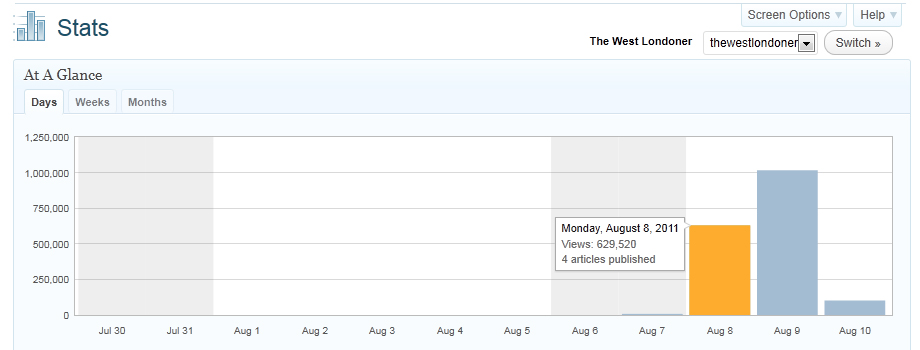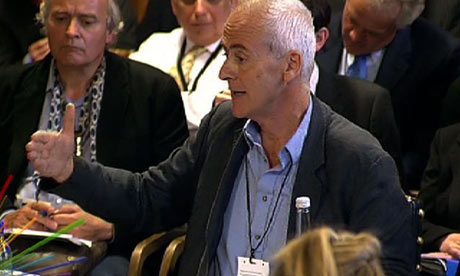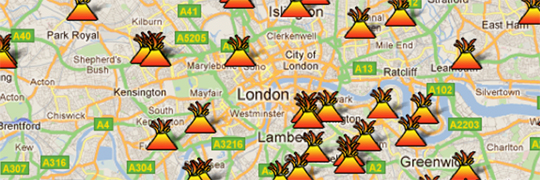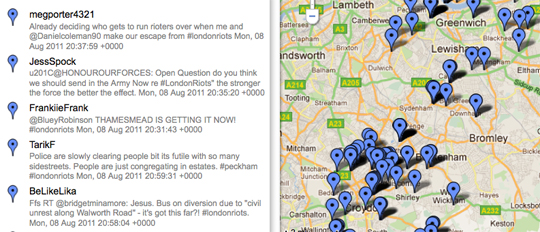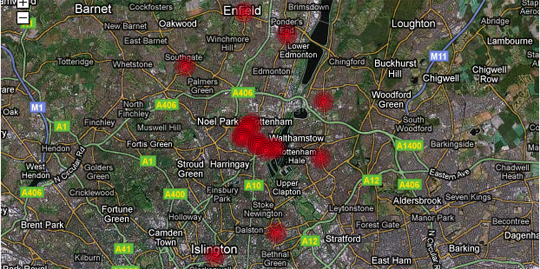 Journalisted is an independent, not-for-profit website built to make it easier for you, the public, to find out more about journalists and what they write about. It is run by the Media Standards Trust, a registered charity set up to foster high standards in news on behalf of the public, and funded by donations from charitable foundations. Each week Journalisted produces a summary of the most covered news stories, most active journalists and those topics falling off the news agenda, using its database of UK journalists and news sources.
Journalisted is an independent, not-for-profit website built to make it easier for you, the public, to find out more about journalists and what they write about. It is run by the Media Standards Trust, a registered charity set up to foster high standards in news on behalf of the public, and funded by donations from charitable foundations. Each week Journalisted produces a summary of the most covered news stories, most active journalists and those topics falling off the news agenda, using its database of UK journalists and news sources.
Eurozone crisis, American downgrade, phone hacking, Syria, Somalia
- The Eurozone crisis leads the news
- US downgrade, the 11th phone-hacking arrest, and Mark Duggan’s shooting also covered lots
- Thailand’s first female prime minister and the appointment of new Turkish military leaders covered little
Covered lots
- The Eurozone crisis, 504 articles
- Standard & Poor’s downgrade the USA’s credit rating from AAA, 243 articles
- More phone-hacking fallout, including the arrest of Stuart Kuttner and allegations against the Mirror Group, 219 articles
- The Syrian city of Hama, with reports of continued unrest and a military assault, 136 articles
- Somalia, as the famine spreads and rebels pulled out of Mogadishu, 119 articles
- Mark Duggan, shot and killed by police on Thursday night leading to Tottenham riots, 87 articles
Covered little
- Thailand elects its first female prime minister, Thaksin’s sister Yingluck Shinawatra, 12 articles
- The appointment of new Turkish military chiefs, including new chief of general staff Necdet Ozel, following a mass resignation on 29 July, 7 articles
- Energy consumption cap likely to be at heart of Chinese low-carbon plan, 1 article
Political ups and downs (top ten by number of articles)
- David Cameron: 337 articles (-28% on previous week)
- George Osborne: 230 articles (-15% on previous week)
- Vince Cable: 112 articles (-37% on previous week)
- William Hague: 97 articles (-32% on previous week)
- Gordon Brown: 80 articles (+10% on previous week)
- Ed Miliband: 78 articles (-28% on previous week)
- Nick Clegg: 77 articles (+7% on previous week)
- Tony Blair: 73 articles (-17% on previous week)
- Ed Balls: 72 articles (-18% on previous week)
- Liam Fox: 46 articles (-2% on previous week)
Celebrity vs serious
- Investigation into alleged Cleveland police corruption, as the chief constable and his deputy are arrested, 24 articles vs. ‘Swagger Jagger’, number one single from The X Factor’s Cher Lloyd, 20 articles
- Vince Cable’s response to the Hargreaves copyright review, 23 articles vs. Jim Carrey’s new film, ‘Mr. Popper’s Penguins’, 23 articles
- The Gibson inquiry into alleged British complicity in torture, as human rights groups threatened a boycott, 18 articles vs. Sally Bercow, with rumours of her appearing on Celebrity Big Brother, 17 articles
Arab spring (countries & current leaders)
- Syria and President Al Assad: 132 articles (+288% on previous week)
- Libya and Colonel Gaddafi: 68 articles (-66% on previous week)
- Egypt’s Military council: 42 articles (+425% on last week)
- Israel and Prime Minister Netanyahu: 23 articles (+283% on previous week)
- Turkey and Prime Minster Erdogan: 22 articles(+144% on previous week)
- Saudi Arabia and King Abdullah: 16 articles (+100% on previous week)
- Bahrain and King Al Khalifa: 10 articles (+400% on previous week)
- Gaza and Hamas: 7 articles (+17% on previous week)
- West Bank and President Abbas: 7 articles (+250% on previous week)
- Yemen and President Saleh: 6 articles (-40% on previous week)
- Qatar and Emir Khalifa Al Thani: 6 articles (from 0 articles previous week)
- Tunisia and ex-President Ben Ali: 6 articles (-68% on previous week)
- Iran and President Ahmadinejad: 5 articles (-29% on previous week)
- Jordan and King Abdullah: 3 articles (-25% on previous week)
Who wrote a lot about… the trial of Hosni Mubarak
Long form journalism
- 5,253 words: ‘Under the knife, under 20’ – Sarah Harris, The Times, 6 August 2011
- 4,863 words: ‘Meet Chicago’s Interrupters…’ – Andrew Anthony, The Guardian, 6 August 2011
- 4,849 words: ‘Murdoch & me: How Chris Bryant brought a media mogul down to earth’ – Robert Chalmers, The Independent, 7 August 2011
For the latest instalment of Tobias Grubbe, journalisted’s 18th century jobbing journalist, go to journalisted.com/tobias-grubbe
